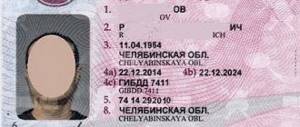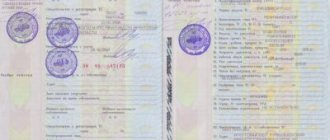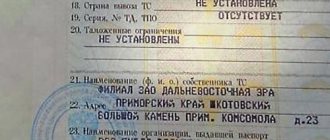What does 63 PTS mean for a car?
PTS 63 – means the region (Samara region) of the technical passport. Often, buyers purchase a car in another city or region.
When buying a car, you need to pay great attention to the title. There must be free space in this document , since when the owner changes, another owner must be entered.
Who can issue PTS?
- Customs;
- Subjects of a secondary transaction;
- Traffic police department;
- Organizations that manufactured the vehicle.
To obtain the document, you must complete a transaction to purchase a car. When transferring the car to the new owner, this form will be given by the old owner. If the PTS is not suitable for further use, then it must be replaced at the registration authorities.
How does the replacement take place?
- The citizen draws up an application;
- Officials review the submitted papers;
- A decision is made.
PTS is one of the main documents that confirms the owner’s ownership. It indicates VIN numbers and other technical characteristics. When purchasing a vehicle, you need to register the car with the state.
What must be in the PTS?
- Series and number;
- Information about the car and the owner;
- Information about the organization that carried out the registration procedure;
- Organ seal, signature;
- Date of issue of the document.
The registration certificate also contains information about transactions, registration and deregistration.
PTS provides permission to drive a car, also helps fight theft and improves customs control if the car is brought from abroad.
What positions are in PTS 63?
- Car make;
- Engine number;
- Number;
- Body color;
- Vin number;
- Information about the owner;
- Information about the main characteristics;
- Data on registration and deregistration.
PTS is one of the most important documents for a car. Without this form, you cannot sell, insure a car, or deregister it.
What does UVEOS mean in the document?
Each car has a vehicle passport or PTS for short. It contains all the detailed information about its technical characteristics.
In addition, here you can find out all the information about the previous owners. To protect against counterfeiting, the passport is produced on a special form.
Since 2021, a new abbreviation has appeared in the PTS Special Marks, which is mandatory. The abbreviation UVEOS, according to the regulations, is deciphered as follows - “Device for calling emergency operational services.”
Thanks to this special mark and a special device in the car, in the event of a traffic accident, detailed information is transmitted to.
The latest releases of machines already include a built-in protective device. According to the Decree of the Russian Federation, cars that have been used abroad in the past must be equipped with special equipment.
When importing a car from abroad or abroad, obtaining a passport for the car is carried out in different cases.
For example, documentation is not provided immediately upon registration, but is carried out only after the customs procedure.
In rare cases, when a car is re-registered as federal property or when obligations and penalties are imposed on it.
Therefore, their technical passports will always have such a mark (innovation from 01/01/2017). The mark is affixed in the form of the equipment serial number.
Change region
A car owner may need to make changes to the PTS if his personal data changes. A change of region refers to the reason why the form needs to be replaced.
It is not necessary to change the registration certificate when changing the region in all cases. A PTS is issued if the owner of the car plans to sell it soon. The document must contain a free field for writing. If there is a sufficient number of fields , then there is no need to change the PTS. The State Traffic Inspectorate inspector restricts the entry of a change of region into the PTS. In a special field you need to make a record of changes in address data.
Where to change?
You can change your region at any branch of the State Traffic Inspectorate. It is worth considering that there are only ten days to issue a new passport.
Many people wonder whether it is necessary to change registration if the purchase took place in one region?
Of course, you need to change the registration, but if a citizen wants to leave the country, you need to deregister the car . When changing the region, the PTS is replaced. If there is no space left upon purchase, you need to get a new document.
In order to make a change, you need to contact the traffic police with your passport, STS, PTS, OSAGO and an application.
Change procedure
In order to change the region you need to:
- Statement on behalf of the owner;
- Passport;
- PTS;
- Registration certificate;
- OSAGO policy;
- Receipts for payment of state duty;
- A document confirming the change of personal data.
The application must be completed on a standard form. It can be downloaded in the public domain. The statement states that the reason for the replacement is a change in information about the owner.
You must present a document confirming the change in personal data. To change data in the PTS, you need to pay a state fee. Its cost is 350 rubles . Also, if the owner’s personal data changes, it is necessary to replace the car registration certificate.
Action algorithm:
- Contact the State Traffic Inspectorate office on visiting days;
- Submit an application, state a request to deregister the car at the owner’s previous place of registration;
- If you need to provide a car for inspection;
- Provide documents;
- Wait for the new PTS.
Required documents
In order to make changes to documents, you need to take with you:
- Passport, which identifies the citizen;
- Receipt for payment of state duty. The state fee for changing the form will cost 350 rubles. The application can be submitted through the State Services portal. There is also a 30 percent discount and you will need to pay only 245 rubles;
- Certificate of registration, which contains the previous address data;
- Contract of sale;
- If the document is not registered by the owner, a notarized power of attorney will be required;
- Passport confirming the right to drive a vehicle.
An application can be submitted to the State Traffic Inspectorate office. The issuance of a new PTS takes no more than one day.
Duplicate PTS – what does it mean, what to be afraid of and is it worth buying a car?
Partner news / For the driver
A duplicate title for a car means that several things could happen to the original at once, and not all of them carry risks for the buyer. But such risks may still exist and the answer to the question of whether it is worth buying a car with a duplicate, in 2021 may result in the unpleasant loss of the vehicle and getting the money paid to the seller back. However, such risks can be minimized. In this article we will find out how dangerous it is to take a car without the original title and how to check the purity of the purchase.
What is PTS and why is it needed?
Do you have a passport? PTS is the same passport, only for a car. It contains all the formal information about the car; it is issued during the production of the car in the case of a Russian assembly or when importing it into Russia if the assembly takes place abroad.
Formally, a PTS is not a registration document with the State Traffic Safety Inspectorate, that is, it does not affect the registration of the car with the State Traffic Inspectorate. Although, making changes or receiving a duplicate of this paper is considered a registration action.
In addition, the vehicle passport is not a document identifying the owner of the car, although it appears there. The only document identifying the ownership of a vehicle is a purchase and sale agreement in all standard cases - with a car dealership, if the car is new, or with an individual, if the car was purchased second-hand.
During a car purchase and sale transaction, a record of a change of owner is always made in the PTS - the old and new owners of the car put their signatures in the appropriate columns.
What does a non-original look like?
It differs from the original by only one mark of the same name in the form of a stamp - the duplicate indicates that this is not the original PTS.
This is what it looks like:
What does a duplicate title mean and is it worth buying such a car?
There are several reasons why the car seller only has this type of document: - the original is lost, damaged or stolen, - a duplicate PTS was issued simply because the original ran out of space for new drivers to enter, - the original copy is in the bank because the car is pledged , — the car is deregistered due to loss or scrapped.
So, let's look at each of these cases and find out how dangerous it is, whether you should be afraid of a duplicate PTS in each case, and whether it is worth buying such a car at all.
If the original is lost
Then there's nothing wrong with that. If the PTS is lost, a duplicate PTS is issued (clause 61 of Order No. 605).
When issuing a passport to replace a lost, stolen or damaged one, there are no risks for the buyer of the car, except for similar issues when selling the car in the future.
It is easy to check whether a duplicate is issued due to the loss of the previous one - in the “Special disposal of PTS” column. This means that when replacing the document, the owner of the car brought the original to the traffic police. There are risks here only if the car itself is deregistered (see below).
If the original PTS is in the bank
This is dishonest fraud on the part of the seller. And here there are real risks for the buyer - up to the possibility of losing the car in the future. Therefore, in this case, it is not worth buying such a car.
The point here is that when a car is purchased on credit, banks often retain the title as a guarantor. And then the owner of the car can contact the traffic police and make a duplicate passport. The traffic police, in turn, cannot verify the fact that the original document is not lost at all, but is in the bank - there is no appropriate technical basis for such verification.
But it’s quite easy for you to check whether your car is seized. This should always be done when purchasing a car, even with the original title or if the seller claims that the duplicate document was received due to loss or running out of space.
Instructions for checking for collateral
To do this you will need the VIN code of the car.
1) Go to the website of the Federal Chamber of Notaries in the search section in the register of pledged property. 2) Now in the search form, select “By information about the subject of collateral”, then “Vehicle” and enter the VIN of the car
3) If the car is pledged, then as a result of the search you will receive a table with the notification number, by clicking on which you can go and view the notification itself.
This is what the search result looks like if the car is pledged:
If the car is not pledged, then you will be given the relevant information.
But there is an important subtlety here. Banks do not always enter pledged property into this register. That is, the car seller may have a duplicate title, he will claim that he lost the original and restored this document, and when checked in the register of pledges, everything will be clear. But in fact, the original PTS is in the bank, and the car is pledged.
There is also good news in this situation. According to the 2018 law, collateral cannot be sold without the bank’s permission, and the bank will not simply resolve this matter without closing the car loan. If you buy such a car, and the bank finds out about it, the contract may be declared void by the court, and the car must be returned (if, for example, the seller stopped paying the loan, and the court ordered the vehicle to be sold to pay off the debt).
But if the car does not make it through the register of pledges, then judicial practice in 2021 will be on your side as a buyer. The logic here is simple: as a buyer, you could only find out about the collateral from open sources. And, if the bank did not bother to enter a notice of the pledge into the register, then your transaction to purchase a car is considered bona fide, and with a high degree of probability no one will take the car away.
If the car is deregistered
In this case, the scheme is more multi-step. For example:
- a person bought a car and did not register it in his name for a long time - according to the law, the seller can deregister such a car on the 11th day after the sale (dates in the DCP) so that he stops receiving traffic police fines and accruing transport tax; but if he has lost his copy of the contract, he can deregister the car on the basis of loss; in this case, he cannot provide the original PTS (since he gave it to the buyer), and he will be issued a duplicate PTS.
Thus, you need to go to the traffic police website to check the car for deregistration by VIN code. To do this, select the check “by registration with the traffic police”. Based on the result, you should be given information about the last owner and, most importantly, there should be an inscription “to date.” This means that the car is registered with the State Traffic Inspectorate.
If the car is deregistered, then the restoration procedure for you can be quite complicated - especially if this happened due to the disposal of the vehicle.
What is the difference from the usual?
PTS
If the car was purchased in another region, it is not necessary to go through the registration procedure there . The law gives ten days to register.
DVA makes it possible to register a car in another region. To do this, just contact the MREO and pay the fee.
For issuing a new PTS you must pay 800 rubles, for making changes - 350 rubles.
It is necessary to change the region in the PTS, as problems may arise during re-sale. The information in the databases will not match. No body other than the traffic police can make changes to the PTS.
Is it necessary to change the region in the PTS when buying a car?
If the car was purchased in another region, you must go through the registration procedure in your city. After applying, the purchased car will be removed from the previous place of registration .
After transferring funds, the seller must transfer all documents to the buyer:
- PTS;
- The buyer must have one purchase and sale agreement;
- Registration certificate;
- Inspection card;
- Service book.
For what reasons are changes made to the PTS?
- The owner has changed;
- The personal characteristics of the owner have changed;
- The car data has changed (body color, engine, etc.).
If the owner changes, it is necessary to issue a title to the new owner. There are only ten days for this. The owner will receive a new document, and changes will be made to the previous one.
In what cases is a mark placed on the PTS?
From January 1, 2021, this mark became mandatory. And now it is installed on the title of all vehicles that have passed the mandatory technical check for compliance. UVEOS may only be absent in those vehicles that have been previously inspected
The location of special marks in the passport is a clean and empty field on the first page of the document. Here, seals and stamps are usually affixed, and one or another specific information is also written down to employees of the State Traffic Inspectorate.
Today, new types of vehicle registration certificates are being developed. The government is going to completely transfer this document to a plastic version. They promise to complete the restructuring in 2-3 years.
Now it is already possible to exchange old models for new ones, and also receive a PTS made of plastic when purchasing a new car.
Most likely, enhanced ciphers and codes (for example, a barcode), or some other degree of protection against counterfeiting, will be added to the new passport standards.
In ordinary life, UVEOS is called a button for all cases of survival. This device was able to save the lives of many.
The button can operate in two modes:
- In the first option, the driver, if able, can press the rescue button himself. In this case, the car immediately connects the driver with the ERA-GLONASS operator;
- In case of emergency communication, the operator immediately sees the location, make and color of the car.
During these 2 years, various cases were recorded:
- head-on collisions;
- moose strikes;
- vehicle fires;
- a large number of calls come from cold regions. People can simply freeze on icy roads.
For example, if the car is frozen and the engine stalls, the driver can press the emergency button and the operator will help quickly provide assistance.
The second option for calling for help can be when the car independently transmits information without the will of the driver. Information is transmitted in the event of a vehicle collision or overturn.
It is possible to make an independent decision directly with the dispatcher thanks to the accelerometer.
In the event of such a call or voice message, the operator will see on the computer monitor the threshold impact limit exceeded. Such challenges must be treated with special attention.
Because the person who was in the car at the moment may no longer react or ask for help. In addition, after such a message, the car may be located in a different place than the computer showed.
This is due to the fact that the impact could have carried the car to another place. Therefore, when leaving for this location, the operator must once again check the location of the vehicle.
Even in a minor accident, a person may receive a blow to the head and will not be able to call for help on their own.









